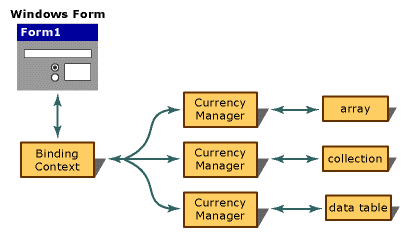What method is considered the "standard" for keeping data structures within GUI controls synchronized with the data structures that are maintained by the application?
For example: In WinForms, if one creates a ListView instance, rather than pointing it to a data structure that represents the items to appear within the list, one must programmatically instantiate ListViewItem(s) and call an .Add method to manually replicate them, one by one, into a data structure that is internal to the ListView itself. This makes sense from a threading standpoint, and it also makes sense within the context of rendering that a control should require a specialized data structure to exist for which the control alone knows the details regarding maintenance.
However, this creates two issues:
Redundancy: If the client class manages its own list of entities, to allow the user to select among them from the WinForms UI, this entire list must be read, converted and then recreated inside of the UI control via methods such as: .Add(ListViewItem item) Lists now occupy twice as much memory.
Complexity: Since two lists now exist, one must programmatically ensure that they remain synchronized. This can be achieved with events that are fired from the client class's collection object, or a programmer can simply be careful to always add/remove from one list when they add/remove from the other.
I have seen many instances where programmers will take the shortcut of using a UI element like a ListView as the actual collection object used to maintain the list. For example, each user entered item will be immediately inserted into the ListView, and then when it comes time to access to user's entires, the application just iterates through the ListView. This method fails to apply when you are properly seperating business/application logic from UI logic.
Overall, something just doesn't seem right about storing application data within a data structure that is internal to a GUI control. Likewise, storing two lists and keeping them programmitically synchronized doesn't seem like an elegant solution either. Ideally, one would need only to supply a UI element with a reference to a list that resides within the scope of the client.
So, what is the "right" way to approach this problem?

